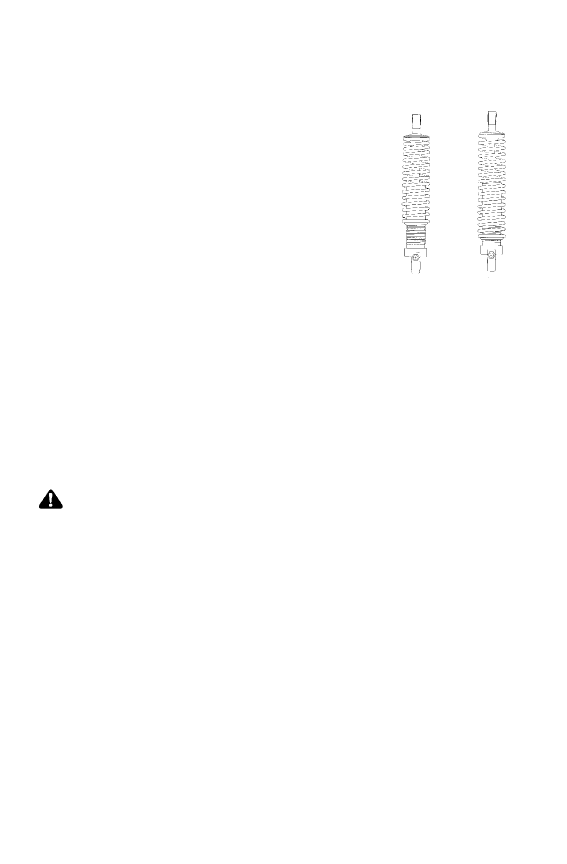Snowmobile Polaris Touring and WideTrack (2005 year). Instruction - part 9

34
THE PERFECT FIT
Front Suspension Adjustments
Adjusting Front Shock Spring Preload
Increasing spring preload will increase
ski-to-ground pressure. Decreasing spring
preload will decrease ski-to-ground
pressure. When adjusting, be sure the
springs on both the left and right sides of
the machine are at the same adjustment.
To increase front shock spring preload,
grasp the spring and turn it to the right.
Turn it to the left to decrease preload.
Illustration B indicates high preload and
illustration C indicates low preload.
Increasing the spring preload too much may adversely affect the
handling of the snowmobile and the performance of the suspension.
Never exceed one inch of preload beyond the factory settings, and
ensure that both sides are adjusted the same. When decreasing preload,
make sure at least two turns of preload are holding the spring between
the retainer on top of the shock and the threaded spring preload
adjuster nut on the shock body.
NOTE: Not all models have shocks with thread adjustable spring
preload. See your dealer for more information.
CAUTION
Always leave one thread showing above the adjuster nut. On
models equipped with a plastic adjuster nut, if the nut is
unscrewed from the threaded body, the nut will break.
C
B